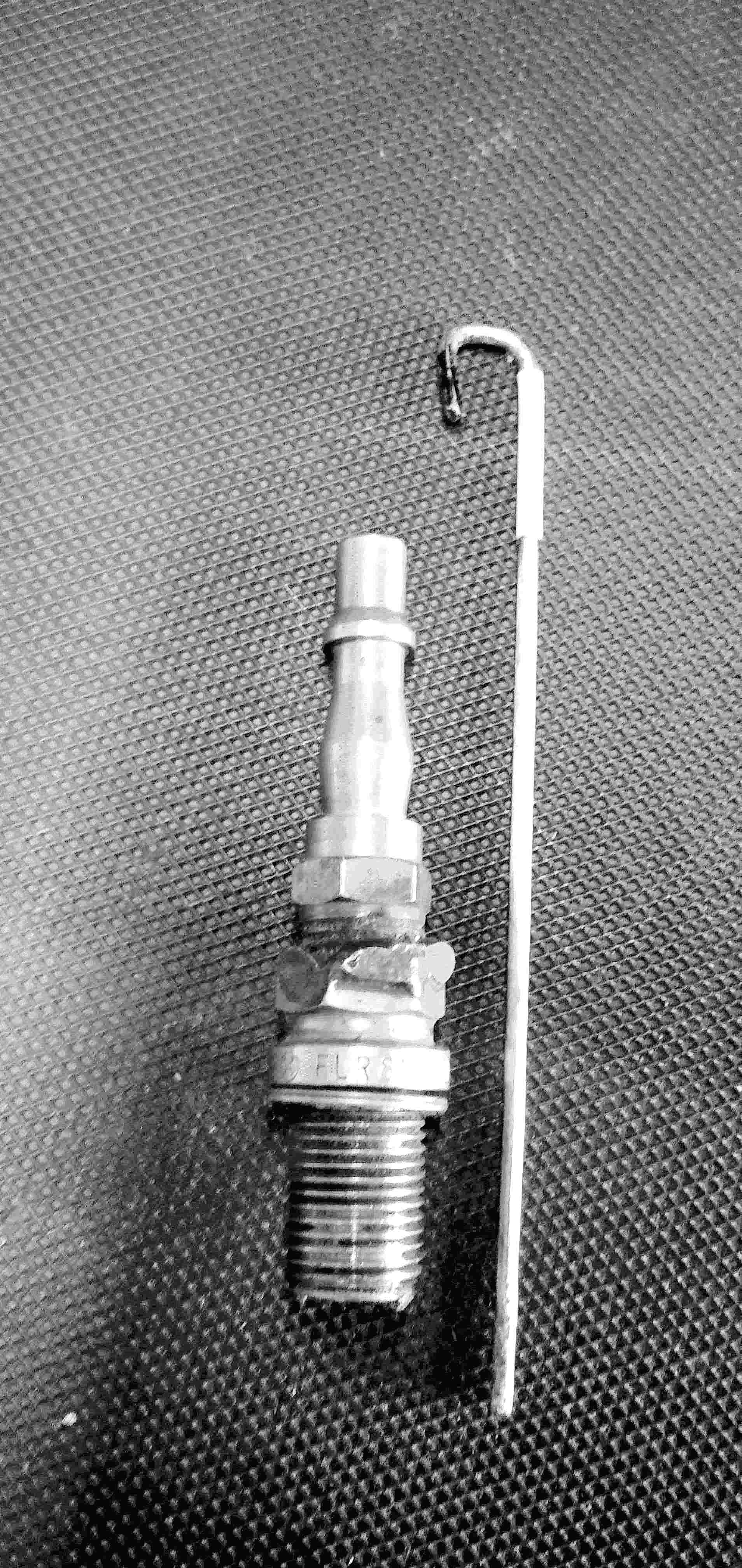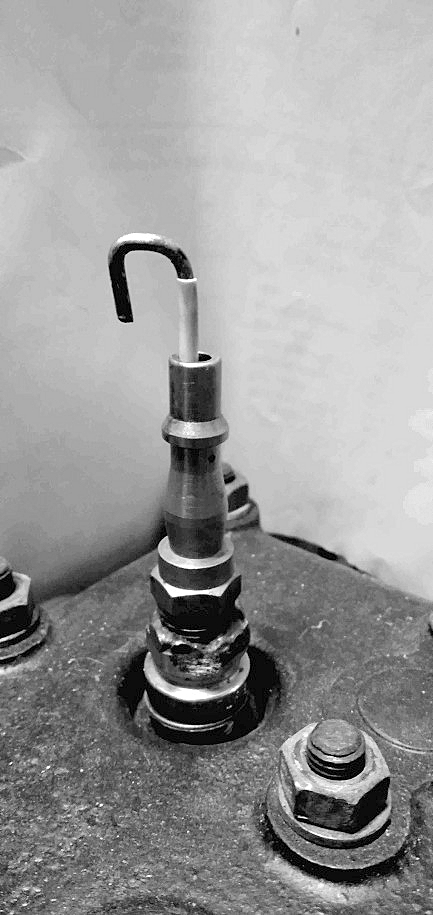The tool is produced by removing the porcelain centre from a sparking plug leaving the steel body. The earth/side electrode is cut off. A suitable male air line connector is then brazed or welded into the body.

MULTI-PURPOSE SERVICE TOOL
FOR FINDING TDC & TESTING COMPRESSION
Here is a "service" tool , which can be simply made using an airline
connector, dipstick and an old sparking plug. With this, one can easily set an
engine to top dead centre, set static ignition timing and check for and identify
the areas of compression loss. As I said, a simple tool but very useful.
The tool is produced by removing the porcelain centre from a sparking plug
leaving the steel body. The earth/side electrode is cut off. A suitable male air
line connector is then brazed or welded into the body.
The tool is screwed into number one cylinder and by rotating the engine the compression stoke can be found by feeling the pressure increase with one’s thumb on the connector or by taping a balloon onto it and watching the inflation and deflation.
The next part is the "dipstick". A simple steel rod with a bend in the top ,
to prevent it dropping into the cylinder, this slides down the connector and
rests onto the piston top. The tool is screwed into the cylinder head and the
rod inserted, This will drop down and by turning the engine BY HAND , top dead
centre will be indicated when the rod reaches its upper limit. This should be
marked on the rod . On the one shown this is marked with some heat shrink tube
which is cut at that point. So TDC is now easily set. Having TDC marked the
engine can be rotated backwards (I usually do this by putting into gear and
rocking the car back-wards) to set static firing point on the flywheel, this can
also be marked on the dipstick. We now can set both TDC and ignition timing.

Now for the second use of the tool. We can of course check compression with the use of a compression testing pressure gauge , but this only indicated good or bad pressures and not where the pressure is being lost. This is where this unit come into play. By setting the engine to TDC, for each cylinder in turn, and putting into gear, hand brake on with the wheels chocked, we can now with the tool screwed in (minus the dipstick) connect up a low-pressure airline to the connector and blow air into the engine. With the air go-ing in, one should listen for the air leaking out. Any valve leakage will be heard either at the carburettor or the exhaust tail pipe, any piston blow by indicating piston ring leakage will be heard by removing the oil filler cap. Cylinder head gasket failure will be shown by bubbles in the radiator.
I have used this tool over the years and has helped no end of times.
Peter Clayton DA7C